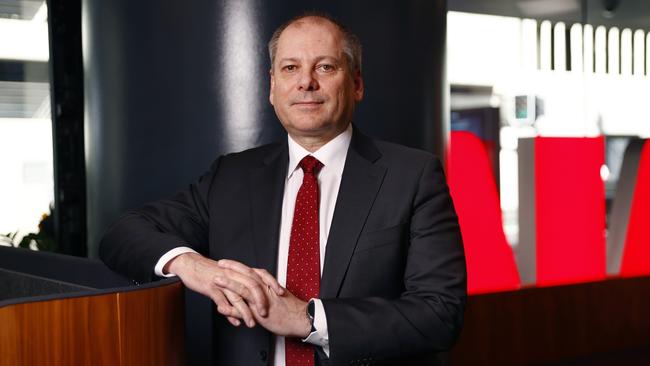Westpac flags bad debt charges and higher costs amid $1.8bn profit, misses analysts expectations
The banking major’s net interest margins rose during the third quarter, but costs hurt the bottom line, while loan quality deteriorated slightly amidst aggressive rate hikes.

Westpac posted a third-quarter unaudited net profit of $1.8bn that disappointed investors, as fatter margins from higher interest rates were partly offset by costs that are rising at a faster pace than expected.
In an impromptu market update on Monday that included slightly worsened asset quality statistics, the country’s second-largest lender said expenses for the second half to date had grown by about 5 per cent, driven by higher prices for suppliers, costlier wages and technology spend.
That excluded one-off expenses associated with its “cost reset” program - a plan that aims to improve the bank’s expenses-to-income ratio against its peers Commonwealth Bank, ANZ and National Australia Bank; and other “notable” items.
Westpac has not been consistent in releasing third-quarter profit updates. In 2022, the bank did not release profit numbers for 3Q and on Monday it did not provide a comparison to the equivalent quarter a year earlier.
In March this year Westpac switched to using statutory profit as its preferred measure, unlike its peers who focus on cash profit, a closer gauge of underlying operations.
The profit number, however, was below the roughly $1.9bn Citigroup analysts were expecting, and also behind consensus projections for the second half, sending shares as low as three per cent lower to $20.63 each during the day, the lowest in two months.
UBS analysts told clients the result “suggests Westpac will need to deliver another quarter of earnings” similar to this third quarter in order to meet consensus estimates for the second half profit, which was already expected to be 10 per cent lower than the first half.
Net interest margin – a measure of what the bank earns on loan less funding and other costs – rose by 10 basis points during the three months ending June 30 to 2.06 per cent, compared to the 1.96 per cent margin in the first half.
But excluding treasury and markets income and hedging gains, its NIM was 1.86 per cent, down 4 basis points compared to the first half, reflecting “ongoing mortgage competition,” it said. The margin erosion was slightly worse than that experienced by its competitors.
Veteran banking analyst Jonathan Mott took issue with the bank’s financial reporting policies, saying its decision stop reporting cash profit would be penalised by investors.
“This introduces significant accounting noise (and) creates unnecessary volatility which distorts the underlying trends and is unhelpful to investors,” he wrote in a note to clients.
“Unfortunately, Westpac’s accounting policies appear to increase earnings volatility, reduce predictability and are likely to increase its cost of capital, in our view.”
Citi banking analysts, led by Brendan Sproules, told clients costs had been “materially” higher than expected, but that the result had been “mixed” with largely “in-line” underlying margins, benign asset quality and “a solid quarter from a funding perspective.”
“We expect that the market will focus today on the outlook for underlying costs, which looked well ahead of market expectations and will raise questions on the cost strategy at Westpac,” they said.
Westpac last May dumped its $8.6bn absolute cost target which was aimed at achieving that figure by its 2024 financial year. On Monday, it said it was “committed to cost discipline” and said it had lowered employee numbers by about 2 per cent in the past five months.
The Sydney-based lender also joined its major bank peers in reporting only slightly deteriorated June quarter loan quality and delinquency rates, as borrowers cope with the aggressive interest rate hiking cycle.
It booked a $275m impairment charge, 7 per cent of which was mainly related to a single exposure and the balance coming from a higher write-offs and collective provisions.
Australian loans that were overdue by 90 days or more were 7 basis points higher at 0.80 per cent, while those in New Zealand were 3 basis points higher at 0.32 per cent.
Stressed assets were marginally higher at 1.16 per cent of committed exposures.
The bank’s core equity tier one capital, at 11.9 per cent, was 42 basis points lower than in March, mainly due to the payment of dividends during the quarter.




To join the conversation, please log in. Don't have an account? Register
Join the conversation, you are commenting as Logout